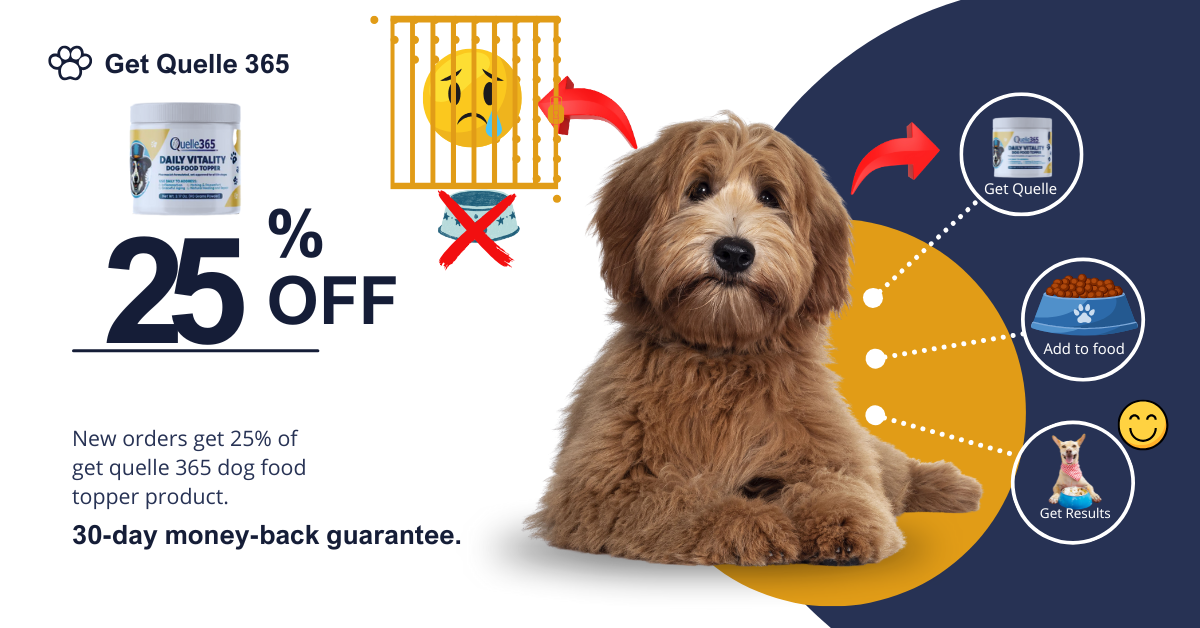If you’ve been affected by AI Overviews, traffic drops, or feel uncertain about SEO’s future, then this episode is for you.
Search Engine Journal’s Editor-in-Chief Katie Morton sits down with growth advisor and author of “Growth Memo,” Kevin Indig, to unpack the results of his latest AI Overviews study.
In this 35-minute episode, they discuss how it impacts search, SEO, and brand marketing in 2025.
Editor’s note: The following transcript has been edited lightly for clarity, brevity, and adherence to our editorial guidelines.
What AI Overviews Mean For Search, SEO & Brand Trust
Katie Morton: Hi, everybody. It is I, Katie Morton. I’m the editor-in-chief of Search Engine Journal, and today I’m sitting down with Kevin Indig, who is a growth advisor to fast-growing tech companies and the author of “Growth Memo,” a fantastic newsletter.
We syndicate it here on Search Engine Journal, but sign up for it directly, too, because he has content exclusive to subscribers. It’s filled with smart insights every marketer needs to know.
Kevin, thanks for making the time today. The study was analyzed in March-April 2025 and published in May. We’ve had time to reflect, and today we’ll unpack the key takeaways.
We’ll start with the nuts and bolts of the study’s background, so listeners understand the context, and then go beyond the data to explore how marketers and companies, especially those frustrated by Google, AI Overviews, or traffic drops, can respond.
So, Kevin, can you summarize the study and share the main takeaways?
Kevin Indig: Thanks for having me on, Katie. It’s great to be here with you.
What The AI Overview Study Really Reveals
Kevin: The study came from a desire to deeply understand, from a qualitative perspective, how everyday users interact with AI Overviews.
In 2024, everyone was eyeing AI Overviews with curiosity, but traffic impact wasn’t significant yet. Then, at the start of 2025, everything changed. It became a “holy cow” moment – this was real and serious.
We asked 70 participants in the U.S., across different age groups, to solve eight tasks that covered dominant user intents: Finding a tax accountant, researching medical questions, shopping, etc.
We intentionally included queries that showed AI Overviews but didn’t tell participants to interact with them – we wanted unbiased behavior.
So, in a nutshell, the three most poignant results are:
1. Classic Organic Results Still Carry Weight
First of all – and this is no surprise – clicks are really rare when people see AI Overviews. That’s gotten through to everyone by now.
And yet, at the same time, classic organic results still have the majority of impact on people’s completion of user journeys.
Let me untangle that for a second: What we found is that people get their final answer – the final piece of information they were set out to get – 80% of the time from classic organic results. Not from AI Overviews, so that was encouraging.
2. High-Quality Clicks Happen In High-Trust Moments
Clicks are going down, but people still click. And each of those clicks has much, much higher quality than, say, in 2024 or before.
Because those clicks are to verify whether the results are accurate, to get human input from platforms like Reddit or YouTube, and to increase confidence in whether what the AI is saying is true.
And for us, that means it’s critical to be present in these high-trust, high-risk moments. I can unpack that a little more…
3. Audience Age Shapes AI Engagement
The third result I found very interesting is that there really is an age difference here. [Younger users] are much more receptive to AI answers. They’re much more active on Reddit and YouTube. Whereas people of a higher age will often just skip the AI answers because they don’t trust them.
You want to know who you’re talking to, who your target audience is. Ideally, what the age group is of your ICP or your target audience, and then make SEO decisions accordingly.
Why Branding Matters More Than Ever
Katie: Thank you for that. What I’d love to talk about next is branding.
I feel like big brands are a little safer with recent developments. If you already have recognition, you’re in a better spot. But if you’re a tiny brand with no recognition, you’re really behind the eight ball.
For the uninitiated or the uninformed, [you might wonder], why is that important? It’s about trust.
When someone sees your brand in an AI Overview, recognition boosts trust. If they click on an AI Overview or scroll to find organic results, they’re more likely to trust and click a name they know. A strong brand increases your chances.
But even strong brands can lose recognition. Mordy Oberstein and I talk about this a lot – he’s doing branding work now. Reputation is everything.
Mordy uses the example of Nike, which was once ubiquitous, but has lost some relevance. Younger generations aren’t as loyal or aware of the swoosh anymore.
So, for big brands, maintaining confidence and trust is critical. For small or new brands, or brands that never had strong recognition, can they still gain traction?
Kevin: You can get traction … but it’s really challenging.
One challenge is that multiple teams need to work together: product, innovation, marketing, support, supply chain. SEO doesn’t control all these variables. It’s always been a discipline of recommendations, relying on others to act.
So, you always were relying on other teams, and that has 10x’d now with AI. Because, as you said, brand, brand perception, and sentiment are so critical to how you appear in search results or answers.
And it goes back to so many different touch points with a brand, not just the logo that people see or the advertising, but also the product that they use, retention, all that kind of stuff.
SEOs need to show other departments where issues lie, using click-through rates, brand search volume, and engagement metrics as signals. They must communicate the story and rally other teams.
But that often runs into cost concerns. Asking for a new call center to improve support has big budget implications, and quantifying ROI is tough.
So, SEOs must push beyond the Google channel and influence company strategy. It’s incredibly difficult to influence.
Katie: Absolutely. And speaking of SEO being declared “dead,” I’ve heard that every few years in my 20 years in the industry, but this is the first time I’ve felt a credible threat.
SEO will never truly die. It’s discovery, and discovery is always needed, but it’s definitely changing. It used to be the most cost-effective marketing channel. Now, ROI is less certain, and budgets are contracting.
But there’s a silver lining. A lot of low-quality, general content meant just to drive mass page views is getting weeded out.
For example, we used to rank for “What is E-E-A-T?” and get tons of unqualified traffic. With AI Overviews answering those general queries now, traffic is down, but the remaining traffic is far more qualified. That’s better for conversions.
It’s hard for publishers who relied on brute-force clicks. But for us, shifting away from programmatic and toward advertisers aligned with our audience, like SaaS, has worked. The industry is changing massively.
So, what do you think is next for SEO and marketing?
The New Role Of SEO In A Changing Landscape
Kevin: You hit it on the head. SEO is contracting; budgets are down, leadership confidence is down, and when people leave, their roles often aren’t replaced. SEO has died and reinvented itself many times.
I see that we’re using a lot of SEO also for AI visibility optimization. I do expect that to change, but however you flip it, we are in a transition period. And the problem with transition periods is that they’re hard to navigate. You lose orientation, and it’s painful.
Once you settle at a new baseline, you just run around a little headless, and you try to find your way. And then slowly, things kind of start to settle back in.
And so I’m very confident that whatever we’re going to call this, we’re going to settle into a new baseline. It might take a while. This is not going to stop in the next six months – probably not twelve months. But it’s hard to predict when.
Based on how quickly models improve and how quickly humans adapt to them, that will decide the pace of this transition.
However, there are also many opportunities in transitions. You can reinvent yourself. And that’s where, as SEOs, we might lose the SEO budget, but maybe we gain some brand budget, which has been much, much bigger in the past.
You see companies spending millions of dollars for multi-year contracts for a tiny logo that sits somewhere on a Formula 1 car. These things happen all the time.
There’s a big opportunity for SEO to detach from that unwanted profiling as a performance channel – detach ourselves from being a performance channel, and become much more of a brand channel, influence channel, presence channel – whatever you want to call it.
New metrics. New levers. Deeply rooted in SEO. And effective and powerful, but kind of in a new design, right? Like SEO 2.0. Whatever you want to call it.
And I do agree with you. I also see people who’ve been in the game for a long time stepping out. Totally get that. I see young people losing a bit of confidence.
But I will also say that I would like (but wouldn’t admit) that there’s a little part of me that’s kind of excited for all this change.
Because it’s an opportunity to kind of reshuffle the cards, find out new stuff, maybe find some secrets, and kind of reverse engineer what’s going on.
When you look at the last just 10 days where multiple people and companies found new ways to reverse engineer what queries Gemini uses and ChatGPT uses, I’m like, man, it’s awesome to see how adamant the industry works on developing the new playbook, dissecting how these mechanics work and LLMs work, and finding new ways.
So, I have high confidence, and I also have a lot of empathy for all the pain and the kind of problems that this industry is going through. But again, I see us coming out the other side at some point in like a new design – and with a lot of impact.
Katie Morton: I love it. I agree with the empathy as well. Because everyone in marketing, it seems, has lost their mind a little bit over the past year or two with these shifts in traffic.
But that Wild Wild West environment is also really exciting because there are going to be all of these developments.
And if people are calm and they persevere and they do the work to figure these things out, either for themselves or to watch what those researchers are finding, people will be okay, right?
Kevin: We always are. Sorry to cut you off there, but there’s a really important point to make here that I didn’t make – and that is: It’s not just search that’s changing.
SEO is at the forefront of AI. At the absolute forefront. Because it’s about words, and it’s about search, and search is kind of the biggest interface between AI and humans right now.
So it’s not just search that’s changing. Marketing is completely changing. And like, all of our lives are completely changing.
Sure, this will take years to trickle through, maybe not even to the degree we’ve thought of it, but it’s pretty clear that AI is at least as revolutionary as the internet. Maybe even the most revolutionary invention that humanity has made so far.
So let’s not forget: Everything is changing. It’s not just us SEOs. It’s all the channels. It’s marketing as a whole.
Modes and levers are disappearing, and new ones are coming up. We’re feeling it deeply in SEO, as being kind of the front line of AI. But make no mistake, this will trickle through to all the paid channels, product, everything.
Everybody is in a state of shock right now, trying to figure out what the new branches are to hold on to and then build on top of. Marketing as we know it is over. LLMs are transforming how they reach us.
Katie: This affects every channel. At SEJ, we’ve collapsed editorial and marketing into one integrated team. It used to be SEO and editorial here, marketing over there, and no one really talked. That doesn’t work anymore.
Now, everything is more cohesive and focused on the ICP and conversion. It’s better for customers and for teams.
Kevin: 100%. I talk to all my clients about this. SEO and paid search should’ve always been connected, but they were siloed, same with product, email, social, etc.
I mean, look: Realistically and ideally, SEO and paid (or paid search) have always been connected at the hip. But I’ll tell you, at least across almost all the companies that I’ve worked with, they were siloed.
The same exists with all these other teams, like product marketing or social media, conversion, and email – all that kind of stuff.
Now’s the time to rip off the band-aid. There can be small teams of maybe an SEO, an editor, an email person, a social person, and maybe a very technical person who can quickly prototype new apps, programs, or tools.
The biggest challenge now is internal red tape. AI is a speed catalyst, but companies’ old workflows slow them down. Big organizations are stuck.
I’m urging clients to form these multi-disciplinary units under one manager, one roof, one mission.
Reaching People Everywhere Requires A Bold Shift To Other Platforms
Katie: Awesome. One last point: other platforms. For too long, people relied too heavily on Google. Diversifying traffic sources – ads, social, newsletters – is now essential. Holistic marketing is the future. What are you seeing [that is] working right now?
Generally speaking, where do people live these days? Where are humans hanging out, and where do we find them? What are the success metrics that you’re seeing?
Kevin: The short answer is: Everywhere.
Katie: Good luck, everyone. Okay, good night. That’s the show!
Kevin: No, but the reality is, everywhere. There’s this interesting paradox. I need to coin this term somehow, but this interesting paradox that basically all the social networks are growing. And new ones are popping up, right? TikTok – I mean, it’s not that new anymore, but it’s still growing. Reddit is becoming much more of a household name now.
And so you ask yourself, what gives? Sure, linear TV’s down, okay. But how is this possible? And the reality is: People are online all the time – speaking for a friend – and they use a lot of platforms at the same time.
So, the best teams, or the companies that are making a big impact, they have this surround sound effect that they’re creating, where they’re present in a lot of places. They engage authentically, say, on Reddit.
When good companies engage on Reddit, it doesn’t feel like marketing. It’s not marketing, really. It’s much more like trying to be helpful, more like customer support or success.
That’s why these people are generally very well-suited to interact on Reddit. They truly add value. They’re truly part of the conversation.
Brands are repurposing their content in a very thoughtful and high-fidelity way, where maybe they create a blog article, turn it into a video, turn it into clips, which then turn into questions they answer on Reddit. There is this kind of everywhere strategy. AI really helps with that.
And I will also say it’s typically not companies that are getting stuck at the quantification-of-impact question. The reality is that steering an organization or a company toward that multi-channel effect – or that surround sound effect – takes a swing.
It takes a leader to say, “Okay, we’re going to spend some money and take six months, and we’re going to invest in Reddit and YouTube, and we’re going to wait for the results to come in. We’re not going to sit there every day refreshing the dashboard asking, ‘How many sales have we generated yet?’”
It takes a bit of a swing. And so it’s defining for this era, for this transition period, where it’s much harder to project and forecast where you’re going to land with some of these things.
It takes judgment and taste and a certain degree of risk-taking to invest in these channels and functions, and being comfortable, or at least okay, with waiting for some of the results to come in and being able to measure them later.
I’m not saying you should wait a year or two. But give it two quarters, maybe three quarters, and experiment with some of these channels.
So, that’s where people are – people are everywhere. It’s not enough to just have one shot at one platform. You need to be kind of everywhere.
And repurposing can help. Using AI with some of these things helps. But at the end of the day, you need to take a swing.
Katie: Very wise, Kevin. One of those things that I found highly annoying is that you can run these experiments, and you’re going to wait for your results, and then before your experiment is even done, everything’s changed again.
Kevin: Exactly. Predictable methods are gone. You take swings, and some won’t connect because conditions change. The best leaders, the best teams – a lot of times, they take a lot of swings.
Because some of those swings will hit full force, and it’s kind of a skill to build.
Katie: Yeah, I couldn’t agree more. We’ve implemented monthly experiments at SEJ. Every department runs one. It could be layout, content type … constant iteration. I tell the team: soft knees. Be ready to shift. There’s no “set it and forget it” anymore.
Kevin: Yes, yes. On point. Allow people to fail. Another good skill is being able to take meaningful risks. I’m not saying bet the farm, but as a leader, if you want to encourage your people to take risks, let them.
Again, that doesn’t mean to blindly shoot in all directions. You want to have some thought behind that, some judgment. You want to be critical. But there has to be a point at which you let go.
Katie: That is a really perfect point. We tie experiments to north-star metrics. For us, one is newsletter subscriptions, so most of our experiments support that. We’ve seen great success, not always in raw traffic, but in conversions and revenue.
Kevin: Amazing. Congratulations on that.
Katie: Thank you. All right, Kevin, any parting remarks before we head out?
Kevin: I’m hearing a lot of very concerned SEOs. Concerned about “How do I tell this story?” or “How do I manage my boss or leadership in this time where traffic is down?”
I want to send out some courage. This is one of the biggest shifts I’ve lived through in my life. I would bet it’s probably the same for most, if not all, of the audience.
So, this is maybe the time to make some changes and have some grace about finding a new playbook.
I’m seeing a lot of SEOs very scared about this. I get the initial fear. But again, this is such a substantial, fundamental change. It’s okay for things to look different. It’s okay for you not to have the answer right now. Be honest with leadership. Push back if needed.
Katie: Focus on new metrics, not just UVs or PVs, but ones that connect to business goals. That’s where the story of success will be told.
Kevin: Exactly.
Katie: Thanks again, Kevin. Where can people find you?
Kevin: growth-memo.com, or just search for “Growth Memo.” That’s my main hub.
Katie: Awesome. We’re at searchenginejournal.com. See you next time!
Kevin: Thanks for having me.
More Resources:
Featured Image: Paulo Bobita/Search Engine Journal








